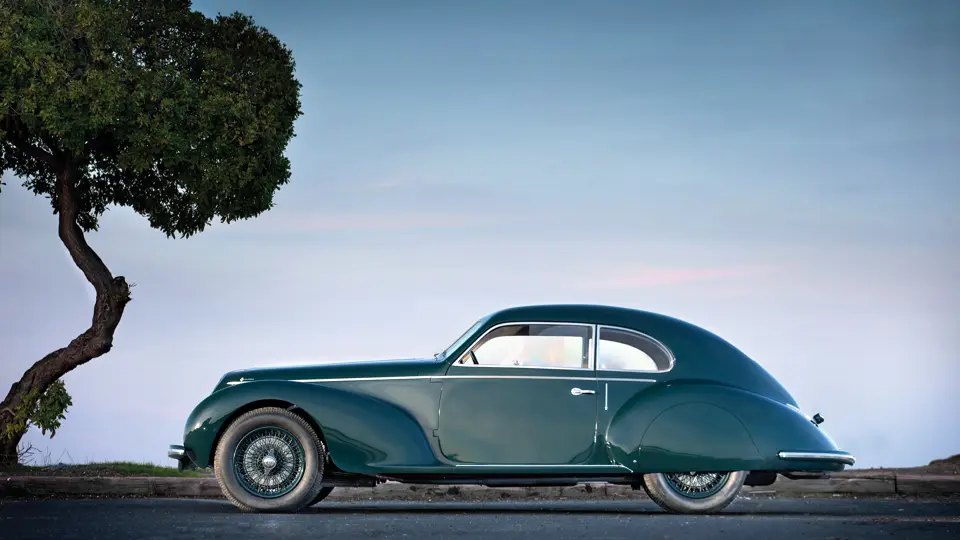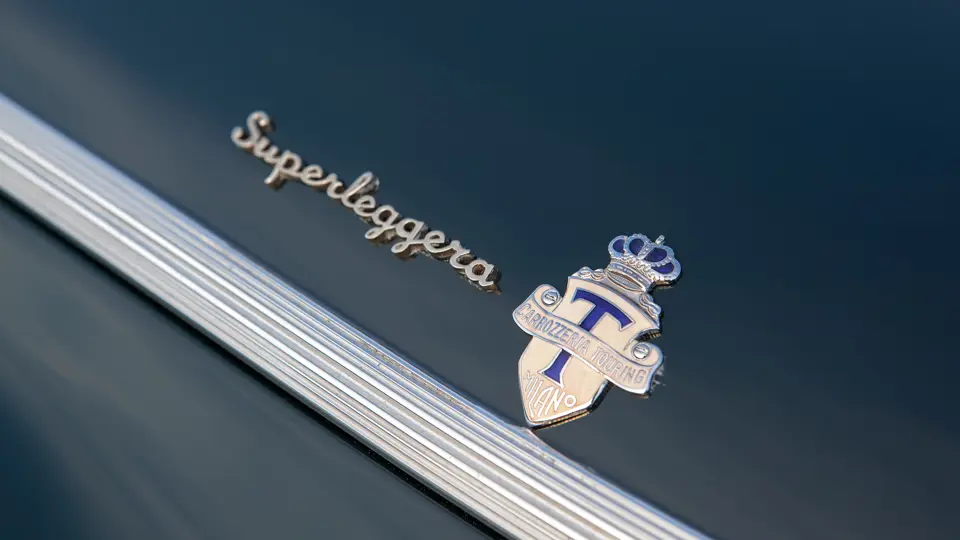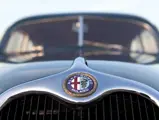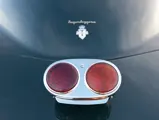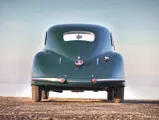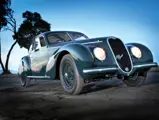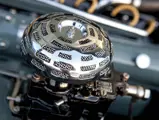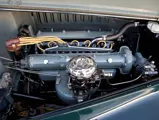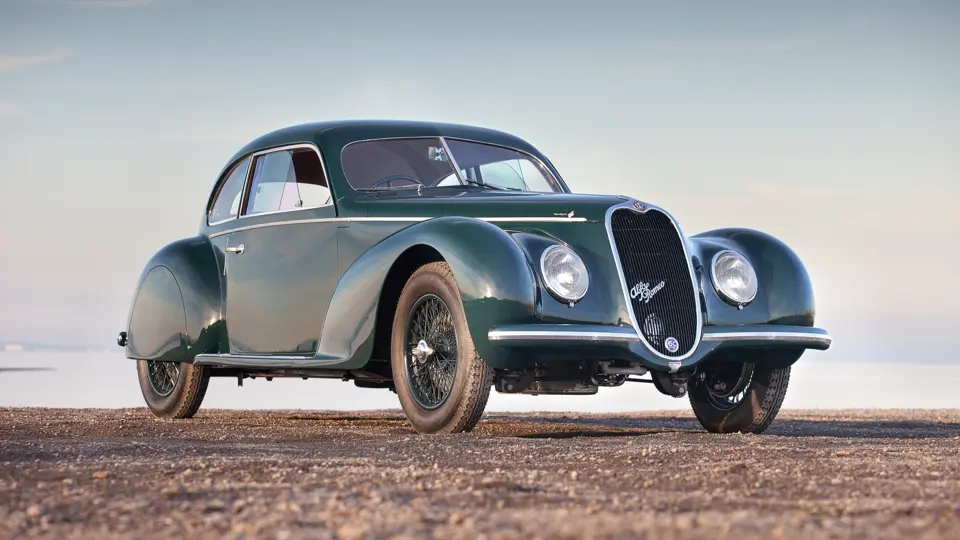
1939 Alfa Romeo 6C 2500 Sport Berlinetta by Touring
{{lr.item.text}}
$1,500,000 - $1,750,000 USD | Not Sold
{{bidding.lot.reserveStatusFormatted}}
- Outstanding, concours-quality restoration
- Pebble Beach Most Elegant Closed Car
- Quail Motorsports Gathering Best Pre-War Alfa Romeo
- Stylish Touring Superleggera design & construction
- One of only 13 built
95 bhp, 2,443 cc dual overhead cam inline six-cylinder engine, four-speed manual transmission, four-wheel independent suspension, and four-wheel hydraulic drum brakes. Wheelbase: 118 in.
In the twenties and thirties, Alfa was equivalent to today’s Ferrari, and more, supplying not only competitive rides for the best drivers, but also a steady stream of beautifully engineered and constructed cars for private entrants.
When the company, which employed thousands of artisans, mechanics, and functionaries to build only a few cars, encountered the inevitable financial difficulties, it was bailed out by the State. Instead of being directed to downsize and build saleable automobiles to generate cash flow and keep those thousands employed, Italy directed Alfa to build great racing machines to demonstrate Italy’s technology and competitiveness on Europe’s race courses. Production shrank, but the few cars that were built were the best in the world.
In a time when automobiles were exotic and often idiosyncratic creations, the products of Alfa Romeo were finely crafted works of art, elegant in conception and executed with due regard to combining function with exquisite form. Virtually every important piece was produced in-house in Alfa’s fabrication shop, pattern works, foundry, and machine shop. The product of artisans, each of whom took pride in the performance, reliability, quality, execution, and appearance of his separate creation, these Alfas also reflected the overall responsibility of engineer Vittorio Jano, who continually tested, evaluated, and improved their performance until they met his high, and growing, standards.
Debuting at the 1925 Milan Auto Show, the 6C 1500 set new standards for lightweight, high-performance road cars and was followed in 1929 by the 6C 1750. The next evolution of the 6C came in 1934, and although traditional in its layout, the 6C 2300 had nearly twice the displacement of the car it succeeded. Accordingly, it was a highly competent automobile capable of providing excellent performance with multi-passenger coachwork.
In 1939, the 6C 2300 was replaced by the 6C 2500. Although the basic engine design traced its roots to the great pre-war racing machines, highly regarded automotive author and historian Griffith Borgeson characterized the 2500 as a “bridge to post-World War II production,” due to the fact that production of the model lasted from 1939 through 1953, including the war years, albeit in limited numbers. This change was affected by an increase in the cylinder bore of two millimeters, as well as an improved cylinder head for better aspiration and increased compression, from 6.5:1 to 7.1:1. In the sport configuration, this translated into a respectable 95 horsepower, with performance aided by lightweight aluminum coachwork.
Production of the 2500 chassis began in 1939, the year of the early example offered here. Chassis 915030 is one of 13 similar examples built by Carrozzeria Touring of Milan between 1930 and 1940 and was imported into the United States by Earl Potter, of Chicago, Illinois, in 1962. It was later purchased by Mr. John Jumer, of Elkhorn, Wisconsin and Chicago, in 1965. In 1990, the Alfa was acquired from Mr. Jumer by Charlie Morse & Malcolm Harris, who commissioned a restoration carried out by a number of Seattle-area craftsmen beginning in 1994, and it was finished just before the 1998 Pebble Beach Concours d’Elegance. Mr. Harris was personally involved with the disassembly and reassembly work, and over 1,500 of his own hours were invested in this masterpiece.
So intensive was the body-off restoration that the chassis was completely disassembled and every piece was refurbished to concours quality. The 6C 2300 block installed in the car is externally similar to the 2500 block, and it was bored-out to the correct 2,443 cubic centimeters and thoroughly fitted with all correct 2500 components, including the cylinder head, carburetor, manifolding, and other ancillary parts, such as the starter and generator, so that it performs and presents as it should.
The attractive tobacco-colored leather interior was restored to original Touring specification as well, and it is virtually unworn, save some wear to the driver’s seat. Interestingly, the interior also displays a lumbar support adjustment hidden under a flap, which was patented by Touring and is likely the earliest of its kind. The original gauges, which remain flawless, were beautifully restored using the photo-transfer and etching processes to be brought back to their original appearance.
Finished in a lovely dark blue-green, with matching wire wheels shod in the correct size 550x18 tires, in dim light the exterior paint appears blue, but it takes on a greenish hue in the sunlight. The exterior panels remain excellent, as does the finish of the engine, ancillary components, and glassy walls of the engine bay.
The results of the restoration were recognized by a Second in Class Award, as well as the Most Elegant Closed Car Award at the 1998 Pebble Beach Concours d’Elegance. At the 2004 Ironstone Concours and the 2004 Kirkland Concours, it was again awarded the Most Elegant Closed Car. Finally, at the 2012 Quail Motorsports Gathering, it garnered Best Pre-War Alfa Romeo, a testament to the elegant Touring lines, as well as to the quality of craftsmanship employed in the restoration. As acquired by the current owner, it was thoroughly sorted out and shaken down, including a servicing of the hydraulic dampeners, wheel bearings, brakes, and fuel system. Today, 915030 is still stunning in presentation and is arguably worthy of display on the world’s most prestigious concours lawns.
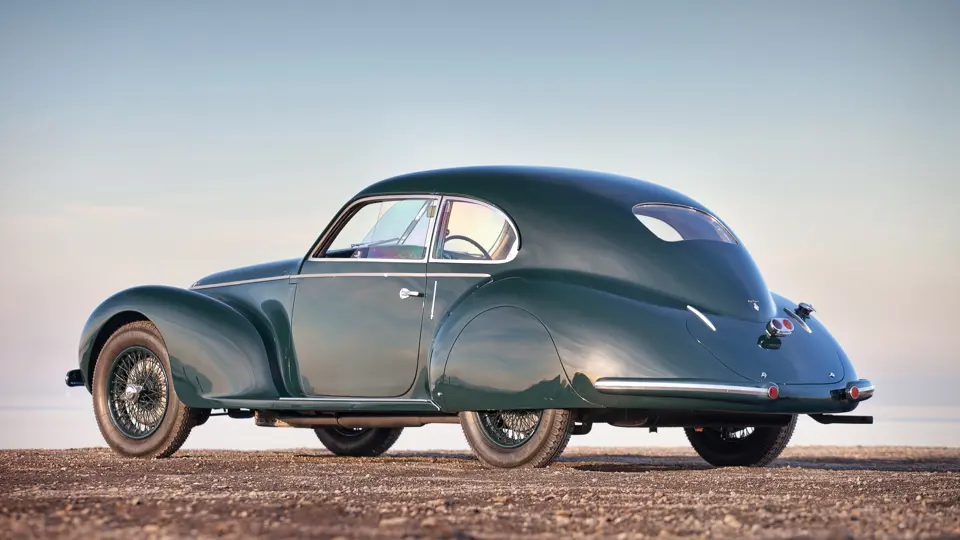
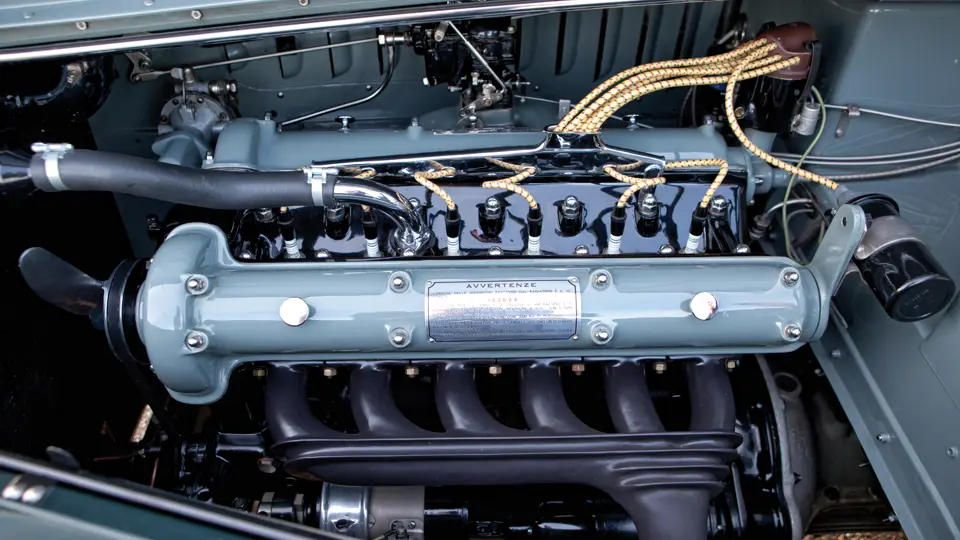


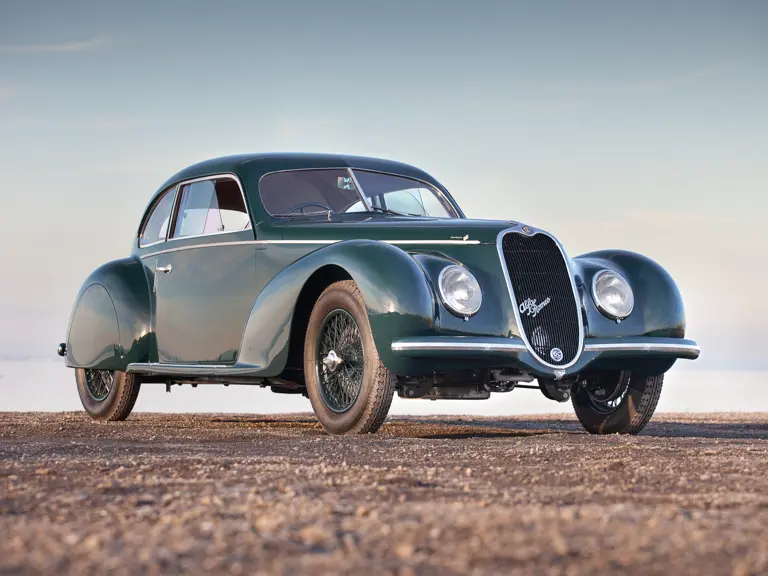
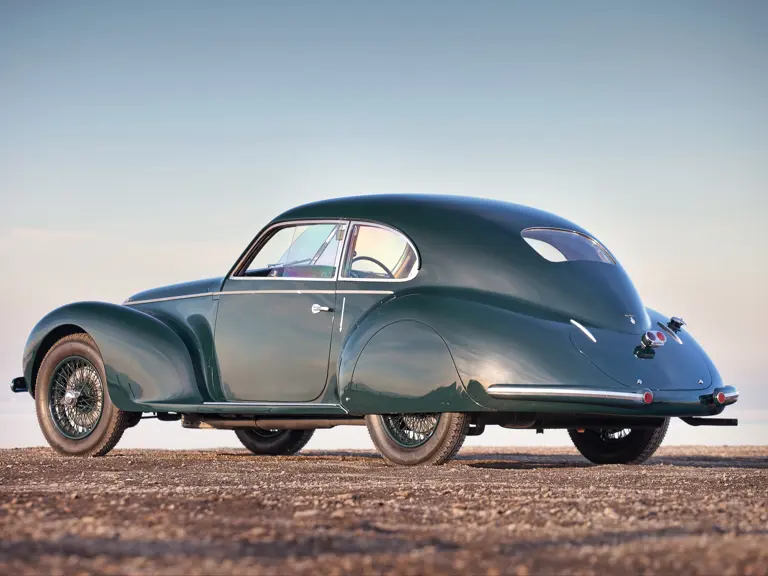
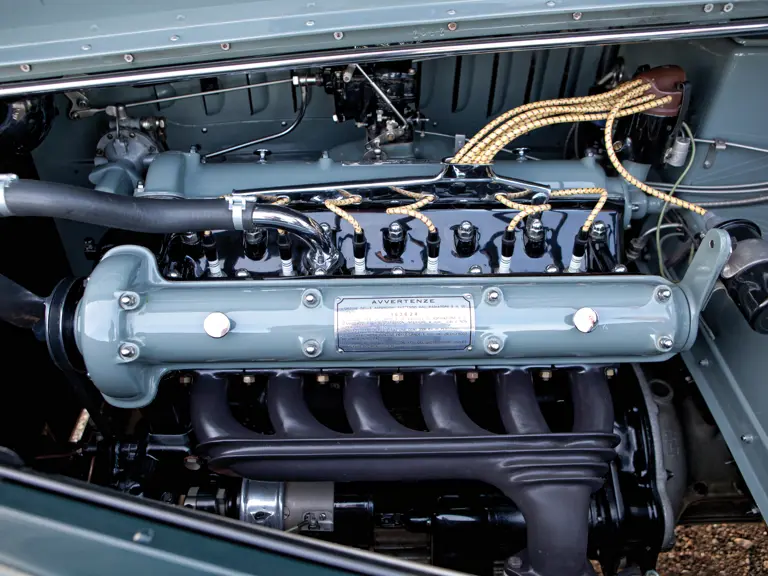
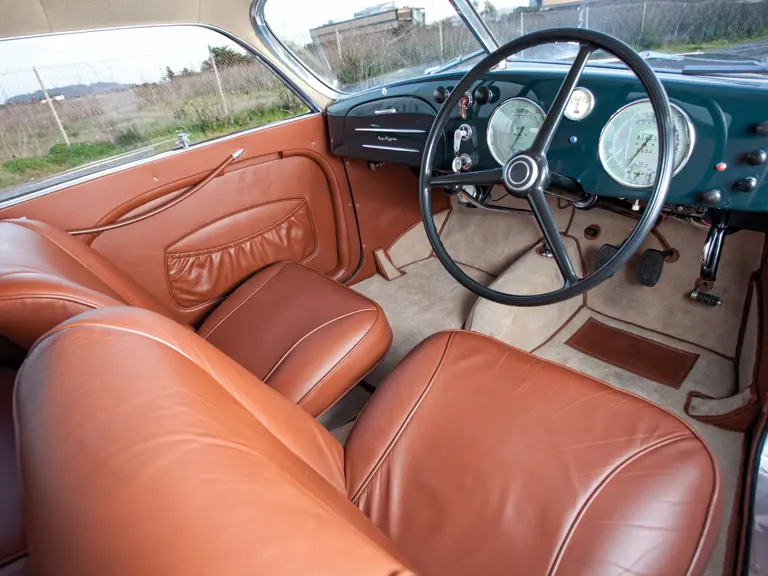



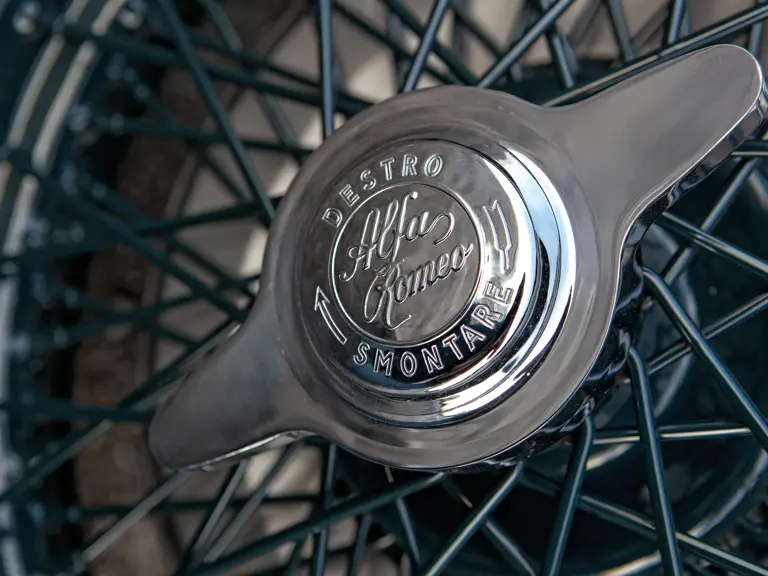

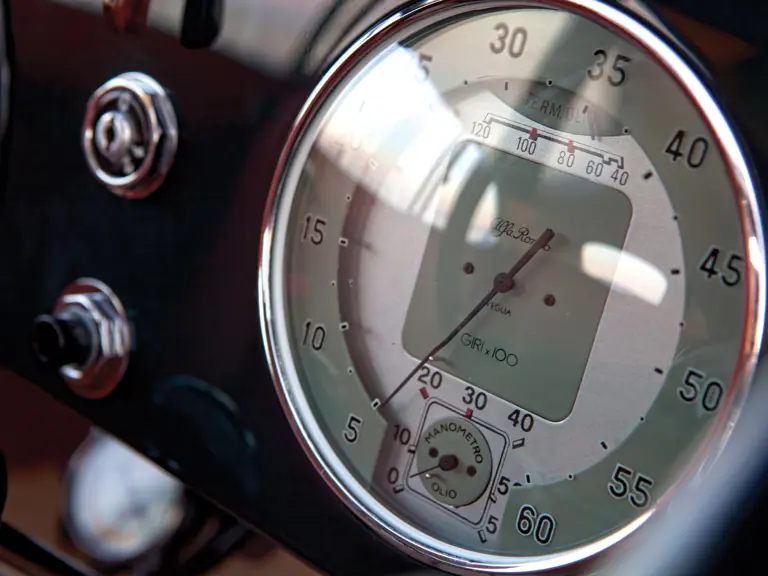
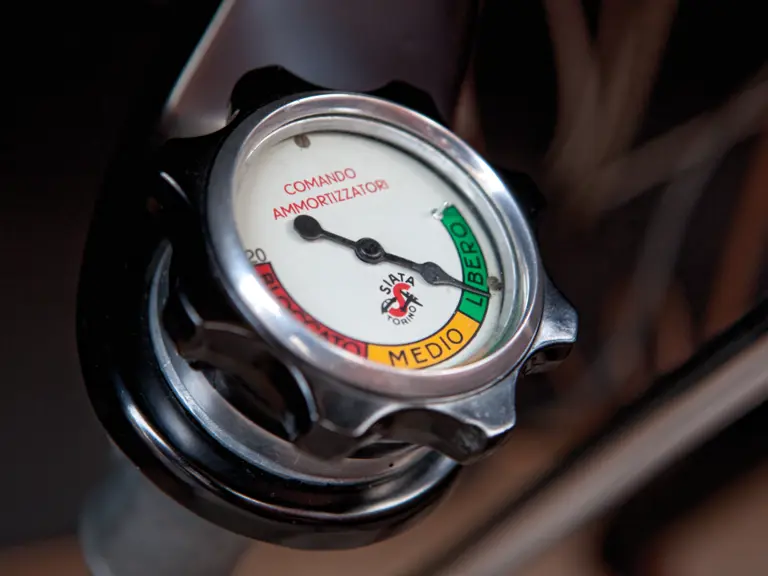
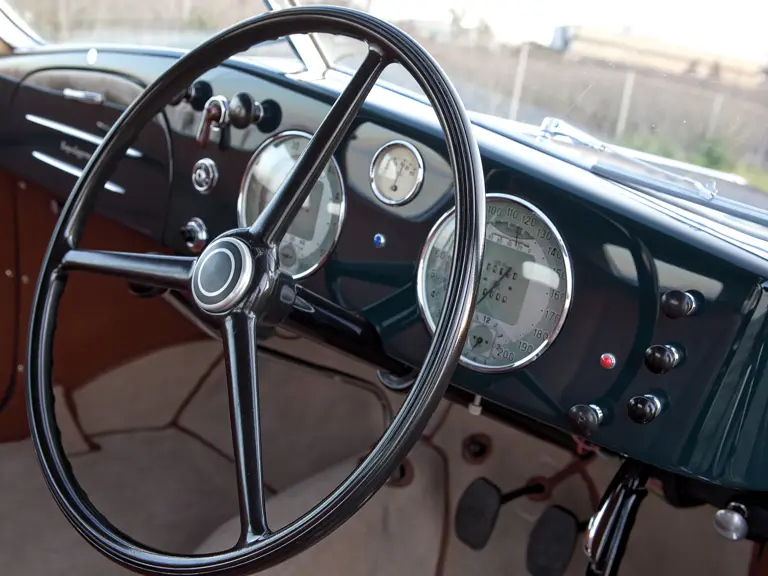

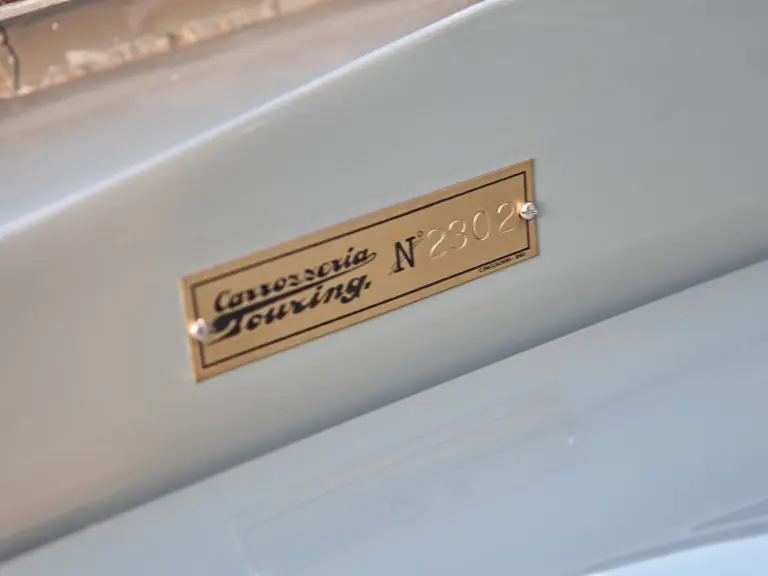


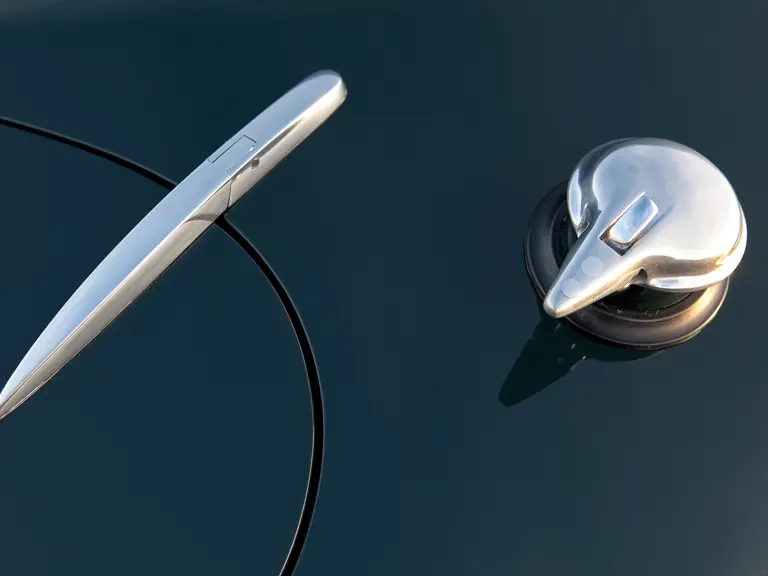
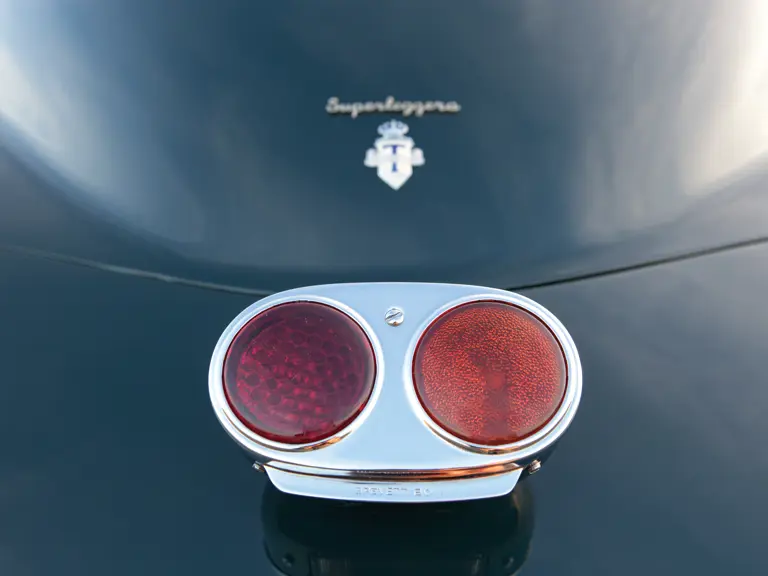
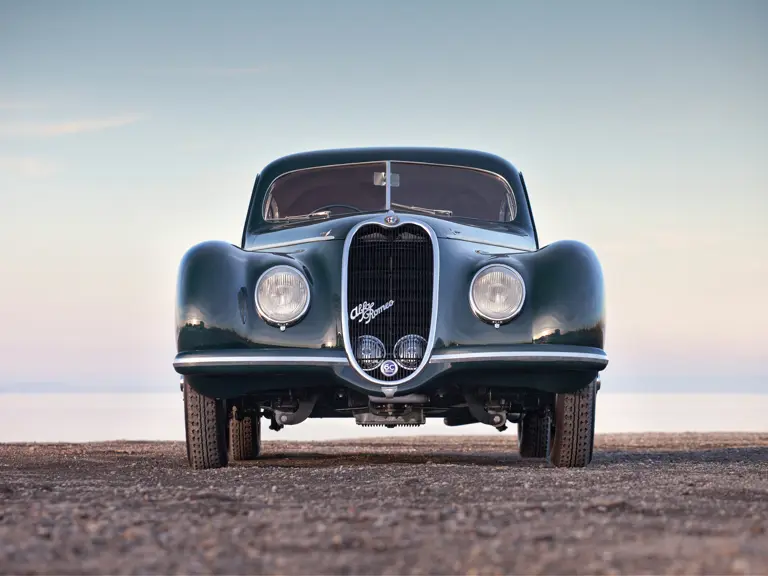

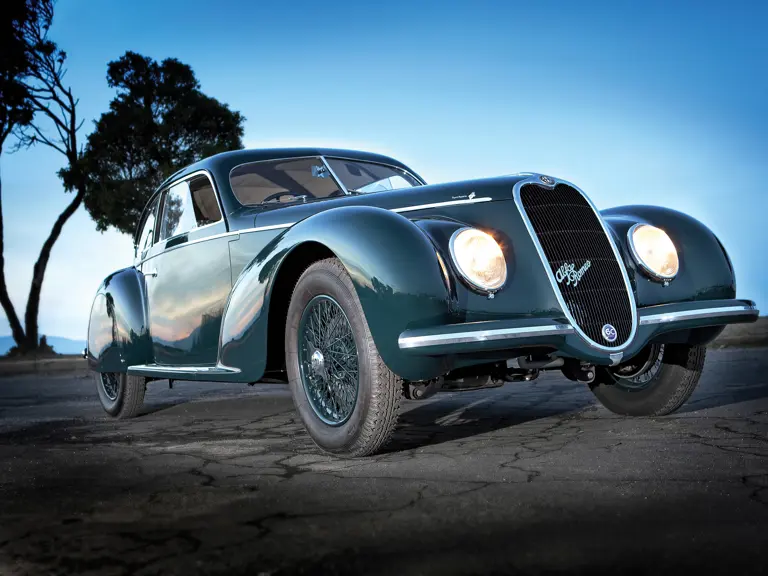


 | Amelia Island, Florida
| Amelia Island, Florida
